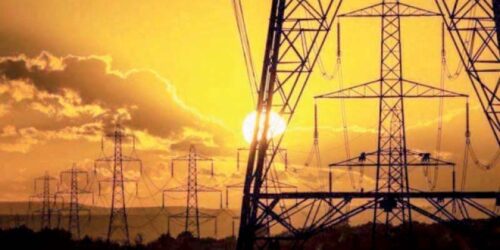A twin energy crisis is going to peak in next few days with initiation of LNG terminal’s dry docking, annual closure of a key gas-well and man-made bottlenecks in supplies.
The most efficiently-run LNG import terminal will be shut down temporarily today (Monday), as Floating Storage and Regasification Unit (FSRU) is going to leave for mandatory dry docking, disrupting gas supplies for around five days.
The back-to-back cut in RLNG supply and annual closure of Kunar Pusaki gas field is proving a recipe for disaster at a time when hydropower is already at the lowest ebb during the peak summer demand.
The government has failed to enhance the capacity of one of the terminals which is possible within days, while the second terminal is not running at full capacity, as third-party arrangements are not in place due to poor management of the energy sector affairs, said sources.
The consumers have already started feeling the heat of the crisis with unleashing of nocturnal outages countrywide. Electricity supply was cut on the intervening night of June 26 and 27 at around 2am for about an hour and again in the morning at around 8am for nearly two hours.
“The hide and seek (of electricity) goes on till the evening with another jolt of powerless hour in the afternoon,” said Javed, a resident of Model Town Extension, on Sunday. It is feared that domestic consumers might also have to brave low pressure and cut in gas supply. The gas crisis in the midst of summer months makes the outlook of winter month much bleaker thus portraying imminent catastrophic energy crisis in the waiting. An insider said the intensity of gas shortage could be reduced significantly if energy managers could have brought filled LNG FSRU during dry-docking so that it could plug in from day one and start injecting the much needed gas supplies.
Tabish Gauhar, Special Assistant to Prime Minister on Power and Petroleum, claimed that the government was working on all fronts to address the temporary supply side issues in the energy sector due to unexpected reduction in large hydro plants power output, unavoidable annual maintenance of Kunar Pusaki gas field and the upcoming replacement of Engro’s floating LNG Terminal along with significant increase in demand by about 20 percent.
On Sunday, the Water and Power Development Authority (Wapda) officially announced that the water level at Tarbela was declining and so is the hydropower being generated at the power house.
A spokesperson said hydropower generation from Tarbela was just 1,317MW against its full capacity of 4,000MW plus. On the other hand, Ghazi Barotha is generating 1,445MW hydropower, Mangla 839MW and Neelum Jhelum Hydel Power Station 969MW, while the other Wapda hydropower plants are supplying 700MWs to the national grid.
Cumulatively, the spokesperson maintained, the Wapda hydropower plants are generating a total of 5,270MW electricity against a capacity of 9,000mw plus. Commenting on the ongoing energy crisis, Federal Energy Minister Hammad Azhar Sunday claimed that the RLNG terminals were pumping gas at full capacity. He also denied widespread loadshedding saying as of 26th June, zero load shedding had been witnessed on domestic grids other than the high-theft feeders.





